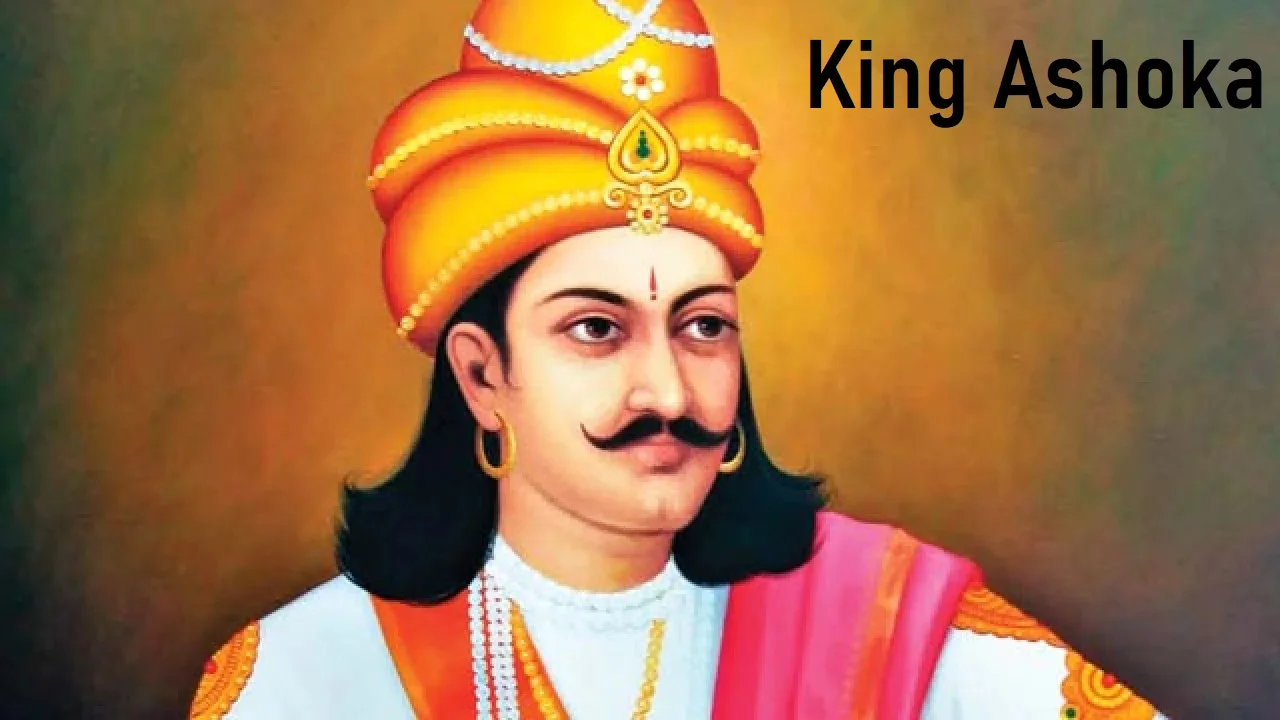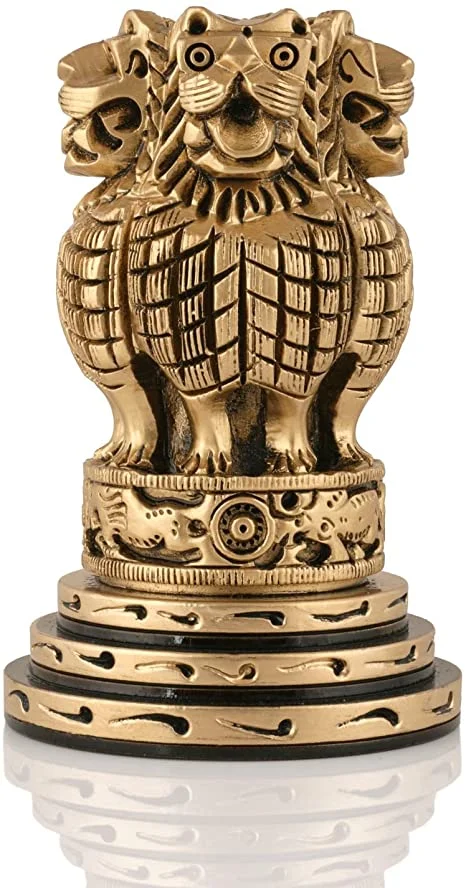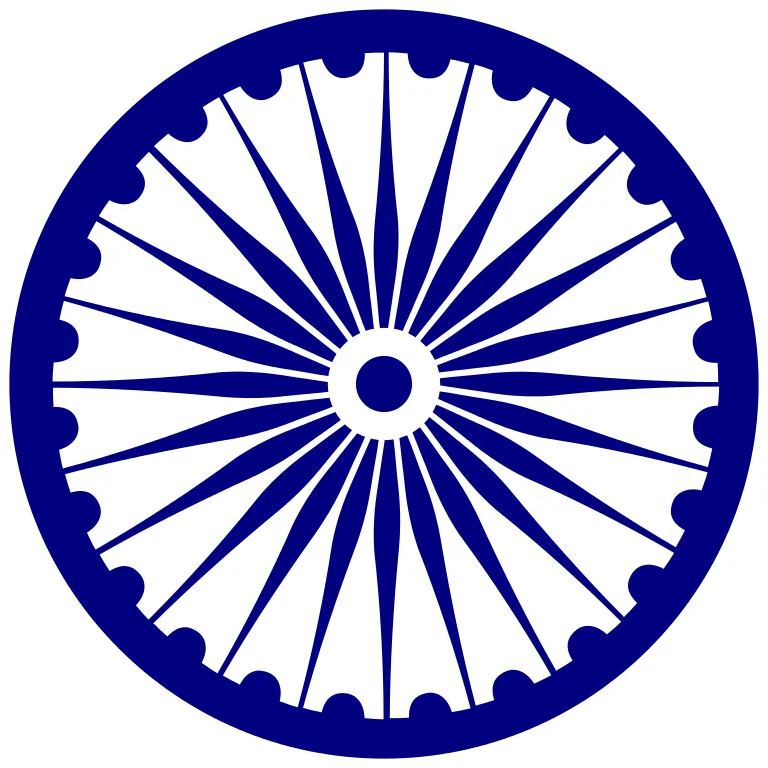The history of the Mauryan Empire has to rely on a variety of elements. The reason is that the formation of this empire differs from the formation of the previous empire. As a result, we have to rely on Buddhist and Jain texts. There is a lot of information about the Maurya rule from ‘Ashoka’s Inscriptions and Pillars/stone edicts‘, Kuntala inscription, Shaka king Rudradaman’s Junagadh Prashasti, Kautilya’s ‘Arthashastra‘, Megasthenes’s ‘Indica‘, Buddhist book ‘Divyavadan‘, Visakhadatta’s ‘Mudraraksas‘ drama, Jain book ‘Parishishtaparvan‘, Patanjali’s ‘Mahabhasya‘ etc. Even the Puranas provide valuable information on the history of the Mauryan Empire. The Greek and Roman historians Strabo, Arrian, Justin, Diodorus, and Plini also provide information on Maurya Empire.
The Mauryan emperors were the first to establish a well-planned system of government in ancient India. Many contemporary and modern scholars and historians have praised this system of governance. According to Dr. Vincent Smith, the Maurya regime was more advanced than the Akbar-initiated regime. Chandragupta Maurya formed the basic structure of this system of governance. Later, Emperor Ashoka made some additions, leaving the basic structure of the Maurya regime unchanged. The capital of the Maurya empire was Pataliputra
Major sources of Maurya Empire:
| Texts/Books | Author |
| Arthasastra | Kautilya or Chanakya |
| Indica | Meghasthenese |
| Mudra Rakshasa | Visakha Dutta |
| Mahabhasya | Patanjali |
Chandragupta Maurya (322 – 297 BC):
Chandragupta Maurya was the founder of the Mauryan Empire. From the Brahmanical sources, it is known that there was a Shudra lady in the royal court of the Nanda Empire, whose name was ‘Mura‘. And the eldest son of this lady was Chandragupta Maurya. It is even known that on the basis of these sources, the Maurya dynasty was named after this Mura.
- According to the Vishnu Purana, Chandragupta Maurya was of a lower caste. But the information provided by the Buddhist and Jain texts to refute this statement is that Chandragupta Maurya was of Kshatriya descent.
- According to the Greek writer Justin, the Nanda dynasty fell in about 325-322 BC. On the other hand, according to Pluto, Chandragupta Maurya sought refuge in Alexander, the Greek hero, from the invasion of the Nanda.
- But when this attempt failed, Chandragupta Maurya established the foundation of the Maurya Empire by his own courage.
- According to Kautilya, Chandragupta Maurya ascended the throne of Magadha in about 324 or 322 BC. Chandragupta Maurya defeated the Greek hero Alexander’s general commander Seleucus in a battle of Seleucid–Mauryan War in about 305 BC.
- Chandragupta Maurya also acquired the provinces of Kabul, Kandahar, and Herat from Seleucus. Chandragupta Maurya married one of the daughters of Seleucus. Later Seleucus sent his envoy Megasthenes to the court of Chandragupta Maurya, who was the author of the famous book ‘Indica‘.
- The Indica text not only introduces the municipal system of the city of Pataliputra but was also an authentic text on the entire Mauryan empire.
Chandragupta Maurya received his spiritual education from Acharya Bhadrabahu. a Jain guru and later left the throne at the age of forty-two, converted to Jainism, and traveled to the Deccan with him. According to Jain proverbs, Chandragupta died in Shravanabelagola by performing Jain rituals or voluntarily fasting.

Bindusara (297 – 273 BC)
Bindusara is the worthy son of Chandragupta Maurya. He has been awarded the title of ‘Amitraghat‘ (or destroyer of the enemy) in the history of India. He was the lord of the region between the two important seas of India (the Bay of Bengal and the Arabian Sea).
- Bindusara befriended the first Greek ruler Antiochus. Bindusara first asked Antiochus to send some sweet wine, dried figs, along with a Greek philosopher. But the first Antiochus said he would send other things rather than a Greek philosopher. He sent sweet wine and dried figs to Bindusara.
- The first Antiochus sent the Greek ambassador Damascus to the court of Bindusara. According to Pliny, Ptolemy, the king of Egypt, sent an envoy named Dionysus to the court of Bindusara.
- The most notable event during the reign of Bindusara was the Taxila Rebellion. According to historical doctrine, the revolt at Taxila began during the reign of Bindusara. Bindusara sent Prince Ashoka to suppress this rebellion. The people informed Ashoka that they had not rebelled against the king. They have rebelled against the tyranny of the wicked nobility.
- In 298 BC, at the age of only twenty-two, Bindusara inherited a vast empire. He further expanded this empire to the south and conquered the whole of South India except the Kalinga, Cher, Pandya, and Chola kingdoms along with North India. According to the historian Taranath, Bindusara conquered 16 kingdoms.
- Bindusara believed in the Ajibik religion. Bindusara’s wife Subhadrangi was also a believer in Ajibik Dharma.
It is known that Bindusara ruled for about 26 years and passed away. However, according to the Puranas, he ruled for 25 years. According to Buddhist mythology, he had 16 wives and 101 sons. At his death, his son Ashoka defeated and killed the other brothers and seized the throne.
Ashoka (263-232 BC)
Ashoka was born in 304 BC. Ashoka was the ruler of Taxila and Ujjain in his early life. When the news of Bindusara’s illness spread, a bloody conflict broke out between his sons over the possession of the throne. At his death, his son Ashoka defeated and killed the other brothers and seized the throne.
- According to Sinhalese, and the famous Buddhist scripture Dipavamsa, Ashoka killed 98 of his brothers. For this, he has been called Chandashoka. He is considered to have ascended the throne around 263 BC. But his inauguration as emperor took place around 269 BC.
- Ashoka took part in the famous Kalinga war in the eighth year of his reign (ninth year of the sect) i.e. in 261 BC (260 BC in the sect). This war was a turning point in Ashoka’s life. Because after this war he became a Buddhist worshiper. He even started the pilgrimage.
- In the eleventh year of his reign, Ashoka converted the Buddhagayatra into a pilgrimage. In the fourteenth year of his reign, he introduced the term ‘Dharmamahamatras‘ with the aim of expanding the ‘Dhanma‘ in the kingdom.
Ashoka made his second journey in the twenty-first year of his reign to Lumbini, the birthplace of Gautam Buddha. He also reduced the Bali or share tax in this village to one-eighth.

Ashoka’s policy of Dhamma:
Ashoka was a devotee of Buddhism and Jainism. However, his preaching and way of life were dominated by Buddhism.
- Basis of Dhamma: Ashoka formed a distinct religion called Dhamma. Non-violence was the basis of Ashoka’s religion. Abandonment of war strategy, refraining from killing animals, etc. are indicative of non-violent ideology.
- Background of Dhamma: The horrors and magnitude of the Kalinga War, Many historians believe that it changed Ashoka’s mind. However, Professor Romila Thapar writes in her book, “The contemporary socio-economic situation gives birth to a new ideology in Ashoka’s mind.”
- Purpose of Dhamma: Ashoka wanted to purify the individual and social life of the people by introducing his religion. Ashoka believed that if the personal family life of the people improved, their social life would also improve. The main purpose of Ashoka’s religion was to build a healthy and normal society for all, irrespective of caste or creed.
- Ashoka’s ‘Dhamma’ for the purification of personal life were (a) kindness, (b) generosity, (c) honesty, (d) chastity, (e) politeness, (f) self-sacrifice, (g) restraint, (h) gratitude. These eight practices have been mentioned.
- Ashoka developed this new religion with his own efforts, including the superstitions of the society, and with many important words from Buddhism. Dhamma is not a superstition, it was an honest effort, non-violence, tolerance, compassion, etc. On the contrary, Ashoka preached the essence of the basic tenets of all religions as ‘Dhamma’ to the people.
Mahadev in Mysore, Rakshita in Varanasi, Mahadharmarakshita in Maharashtra, Majujhantika in Kashmir, and Gandhara spread Buddhism during Ashoka’s reign. Ashoka sent his son (brother in the sect) Mahendra and daughter Sanghamitra to Singhal, Majujhim to the Himalayan region, and Maharakshit to the Greek kingdom to spread his Dhamma.
Ashoka’s Inscriptions/Rock Edicts:
He was the first Indian ruler to be associated with the people through his inscriptions/Rock Edicts. It is believed that these edicts were written in an ancient language called Prakrit. Originally these were carved on the rocks. However, they were not only obtained from the Indian subcontinent but also from Afghanistan. From these inscriptions, the royal instructions of Ashoka are obtained.
- Ashoka arranged for various aphorisms to be recorded on hills, stone pillars, and mountain caves. The scripts in which this message was written are generally called Ashoka’s Rock Edicts. All these aphorisms were written in Brahmi and Kharosthi scripts. However, since the original texts of the Brahmi script were established at the behest of emperor Ashoka, many have referred to this script as the Ashoka script.
- Inscriptions belonging to the original empire of Ashoka were usually written in Brahmi script in the Prakrit language. Again some of the edicts on the north-western frontier were engraved in the Aramaic or Kharosthi script.
- These edicts focus on Ashoka’s life. In addition, his internal and external political policies as well as the imperial scopes are identified from the edicts.
- Large pillar Rock Edicts give the form of Dhamma, including Ashoka’s personal life. In the first pillar of Edicts, an order was issued forbidding the killing of animals and birds.
- In the second large Rock Edicts, references to the Chola-Chet-Pandyas. He mentions in his inscriptions the names of the neighboring kings and their medical relations with them.
- In the fifth large Rock Edicts, the duties and responsibilities of the Dharmamahamatras are mentioned.
The Kalinga Rock Edicts say ‘Munise Praja mama‘ meaning ‘all people are my children. The Mauryan emperor Ashoka died in 232 BC. Even with his death, the glory of the Mauryan Empire came to an end. According to the Vishnu Purana, there were seven rulers after Ashoka. But their exact details were missing. It is believed that after the death of Asha, the Mauryan Empire was divided into two parts, namely, the East and the West. Kunal initially ruled in the western part and Sampriti ruled for some time after him. But later, when the Indo-Greeks suddenly invaded, the reign of the Mauryan rulers after Ashoka ended in 180 BC. Brihadratha was the seventh important ruler after Ashoka who was killed in 187 BC.
Edicts of Ashoka
| Rock Edicts | Subject |
| The First Edict | Prohibition of animal sacrifice and assembly. |
| The Second Edict | Social welfare system |
| The Third Edict | Respect for Brahmanism |
| The Fourth Edict | Courtesy to the elderly and relatives |
| The Fifth Edict | Discussion on the appointment of Dhamma Mahamatra and their duties |
| The Sixth Edict | The important reforms of the administration and the order of the Dhamma Mahamatra. |
| The Seventh Edict | Respect towards all religions |
| The Eighth Edict | Rules of pilgrimage |
| The Ninth Edict | Superstition and baselessness. |
| The Tenth Edict | Expansion of empire through Dhamma instead of war. |
| The Eleven Edict | Theological explanation |
| The Twelfth Edict | Application of tolerance on all religions |
| The Thirteenth Edict | The Battle of Kalinga and the story of 5 contemporary Greek kings |
| The Fourteenth Edict | Inspiration to live a righteous life |
Ashoka Chakra or Dharma Chakra: A single statue with four lion faces. These lions are attached to the backs of the four and the faces point in all four directions. As a result, the faces of the three lions can be seen at once from any direction. The altar is placed on an inverted lotus flower, one of these four attached lion statues. Relief statues of four animals are carved along the side of this altar. These animals are an elephant, a running horse, a bull, and a lion. There is a cycle between these four animals. This chakra is called Ashoka Chakra or Dharma Chakra.


LIist of Maurya kings
| Maurya King | Duration |
| Chandragupta Maurya | 321 BC – 297 BC |
| Bindusara | 297 BC – 273 BC |
| Ashoka | 269 BC – 232 BC |
| Dasharatha/Kunal | 232 BC – 226 BC |
| Sampriti | 226 BC – 215 BC |
| Shalishoka | 215 BC – 202 BC |
| Debabarma | 202 BC – 195 BC |
| Sudhanova | 195 BC – 191 BC |
| Brihadratha | 191 BC – 187 BC |
The Mauryan emperor Ashoka died in 232 BCE. Even with his death, the glory of the Mauryan Empire came to the end. On the other hand, Brihadratha ruled from Pataliputra on the eastern side. Brihadratha was the seventh most important ruler after Ashoka who was killed in 187 BC by his chief general Pusyamitra Shunga. The Pusyamitra Shunga later started the famous royal Shunga dynasty.
Maurya Administration
Kingdom: The king or emperor was the head of this vast and large central bureaucracy of the Mauryas. King was at the top of all power. According to Ashoka, this is not a divine or heavenly rule in any corner. It was a hereditary dictatorship. According to Kautilya, the rulers were the supporter of religion or the promoter of order in society. It is known from Kautilya’s Arthashastra that the monarchical ideology was given precedence in the Maurya period. That is why Megasthenes called Chandragupta’s regime a ‘Centralized Bureaucracy‘. In addition to the cabinet, the chief minister, the mayor, and the chief of staff used to advise the king on various matters. The highest persons of Maurya rule were the Tirthas or Amatyas. These were the ministers, priests, generals, and princes, such as ‘Sannidhata or Treasurer and Samaharta’ or Revenue Collector.
Cabinet: There was a cabinet in the Maurya regime that constantly assisted the king in governance. Kautilya has therefore repeatedly referred to the cabinet. Kautilya specifically mentioned the 27 employees or commissioner/adhyaksh who controlled economic activities. These are some of the important terms-
- Sita-commissioner: Land employee or officer.
- Full-commissioner: Employee or officer of the Commerce Department.
- Customs-commissioner: Employee or officer of the customs department
- Akara-commissioner: Mining Divisional Officer.
- Rajuka: The post-trial inspector.
Provincial governance: With the exception of the capital Pataliputra, the entire Mauryan empire was divided into four provinces. The administration of these provinces was in the hand of a viceroy or a prince or a member of the royal family.
Direct governance: Provinces are divided into several districts to facilitate governance. Which were governed by three types of employees.
- Provincial: who was the head of all activities in the district.
- RAJUKA: These are the employees in charge of the Department of land survey. Later, they were subordinate to the governors and looked after the judicial activities of the rural areas.
- Yukta: who were originally accountants.
Rural governance: Villages were the lowest level of governance in the province. The villages were ruled by “Gopa” and locals. The villages were mainly managed by the head of the village. ‘Gopa‘ and locals were responsible to the head of the village for their activities.
Urban governance: Megasthenes mentions the city-centric system of Pataliputra, the capital of the Mauryan Empire. This system of government was governed by six associations consisting of thirty members. In other words, the number of members of each association was five. The activities carried out by the societies were mainly labor industry, supervision of foreigners, accounting of births and deaths, management of retail and wholesale sales, production and sale of manufactured goods, collection of taxes from the selling price of various goods, etc.
Army: The size of the army of the Mauryan Empire was very large. Ashoka reduced the number of these forces for the sake of peace. Although no historical material is found in such a corner. According to Pliny, Chandragupta Maurya had 6 lakh infantry, 30,000 cavalry, and 900 elephants. According to Megasthenes, this army was managed by 6 committees consisting of 30 members. These six committees were in charge of the navy, infantry, cavalry, chariots, and communications and supplies.
Revenue system: The economy of the Mauryan Empire was largely dependent on land revenue. In this era, farmers were charged one-fourth share of production and an additional tax called Bali. According to Arthasastra, the lands were under the control of the rulers and the government even imposed irrigation tax. Other taxes levied during this period were ‘Pindkara‘ (received from village members), ‘Kara‘ (obtained from flower-fruit orchards), and ‘Hiranya‘ (received in cash).
Economic condition: The progress of the economy in this era depended mainly on agriculture and industry. It was the royal motivation that improved agriculture in this era. At the same time, painting and craftsmanship flourished in this era, mainly by good things and by highways. Slaves elevated agriculture to an extreme level in this era. Trades in this era were run by the government. Although there was no banking system, loans were provided at high rates of interest in this era. Coins with symbols of this era had peacocks and mountains, which were originally referred to as royal symbols.
Social status: According to Megasthenes, there was seven division in the Mauryan society. These were philosophers, farmers, hunters, artists, craftsmen and warrior inspectors, and advisors to the king. Kautilya wanted to include Vaishyas and Shudras in the army during the Maurya period. But in reality, there was enough room for doubt. At this time the condition of the Shudras improved to some extent in the form of farmers and laborers. But they did not have land in their own corner. There were a few religious communities in this era that suppressed some of the social tensions in this era.
Arts: The stone edicts culture found in the Maurya period bears witness to the excellence of Indian art, the best proof of which is the numerous inscriptions and edicts made by Ashoka. These stone edicts were proportionately smoother and brighter than the current state. Four lion statues can be seen in the pillar of Sarnath, one can get the glory of knowledge and energy related to education. According to Buddhism, Ashoka built 84,000 stupas. Among them is the famous Sanchi Stupa. One of the most significant paintings of the Maurya period can be seen in the mountains near Gaya. This polished cave painting shows the rise of the Maurya era to the ultimate level. Ashoka and his grandson Dasaratha provided several caves to the Ajibik community in the Nagajuni hills of Bihar.
The fall of the Mauryan Empire
The reaction of Brahmanism: Pandit Hariprasad Shastri thinks that Ashoka’s pre-Buddhist policy angered the Brahmins. Fifty years after Ashoka’s death, the Mauryan empire began to weaken during the reigns of Dasaratha, Samprati, Shalishuka, Devvarman, Shatadhanban, and Brihadratha. The final result of which was the assassination of the last Mauryan emperor Brhadratha by a Brahmin general i.e. Pusyamitra Shunga.
Ashoka’s pacifist policy: This policy weakens the Mauryan army. However, no such evidence has been found, suggesting that Ashoka’s pacifist policy disbanded the Mauryan army or reduced its number of troops. It is believed that the pressure of maintaining a large army and bureaucracy was one of the main reasons for this weakness. According to historian H. C. Roy Chowdhury, Ashoka’s policy of non-violence became one of the major reasons for the downfall of the Mauryan Empire.
Administrative Weakness: Historian Romila Thapar says the ultimate failure of the bureaucracy is responsible for the downfall of this empire. The reason is that during that period the employees of the Maurya regime were not appointed through competition. Also, the bureaucrats did not accept the views of the people, and even there was a lack of sufficient nationalism among the people. As a result, regional isolation increases.
Weaknesses of Ashoka’s successors: The Maurya rulers after Ashoka were extremely weak. As a result, their activities exacerbated the powerlessness of the Mauryan Empire. It was a weak situation that the Indo-Greek nation invaded India during that period.
Economic Weakness: A huge amount of money was spent on Ashoka’s public welfare activities, the construction of pillars, edicts, and the salaries of Maurya soldiers and personnel. Due to insufficient revenue in the treasury in proportion to the expenditure, there was a severe economic crisis during the reign of the Mauryan kings after Ashoka, which endangered the stability of the Mauryan Empire.
The Maurya Era General Knowledge and comprehensive notes for competitive examinations and student of higher secondary as well as aspirants of UPSC, IAS, SSC, CGL, Railway, Police, and other government jobs. Complete details from the Maurya era is given in this post
